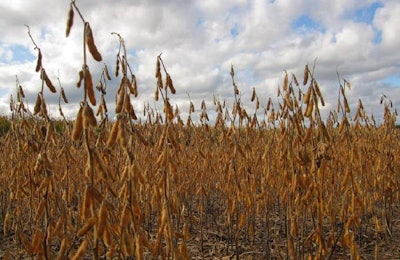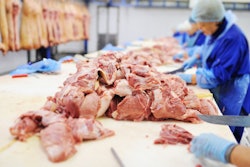
Upward trends for corn, soybean prices continue as demand accelerates
Though previously expected to remain in the range of US$9 per bushel, soybean prices exceeded US$10.50 per bushel in late September, marking the first time soybeans have sold for more than US$10 since June 2018.
Estimated on-farm prices for soybeans have increased US$1.45 since August, according to the U.S. Department of Agriculture’s (USDA) October Oilseeds World Markets and Trade report. Projected soybean production for the upcoming 2020-21 season dropped another 1.2 million tons after September’s downward revision, but escalating demand, rather than restricted supply, is primarily driving the increase in prices, according to Mac Marshall, vice president of market intelligence for the United Soybean Board.
Corn prices have also experienced upward trends, though the incline is not as steep. The USDA reports that the average on-farm price for 2020-21 has increased 10 cents to US$3.60 per bushel during the past month.
Global weather conditions — particularly dry weather that has delayed planting in Brazil — continue to play a role in price dynamics, according to Marshall. But while weather may have nudged prices upward in September, increased use and demand for soybeans is what pushed futures contracts over $10 toward the end of the month, Marshall said.
China continued its run of aggressive purchasing through the latter half of the month, Marshall said, pushing total export commitments to a record 40 million metric tons, with exports to China alone up 60% year over year as the nation’s pork industry works to return to pre-ASF production levels by the end of the year. The previous record, set in 2014, was less than 30 million tons, Marshall said.
Then on September 30, the USDA’s quarterly grain stocks report revealed a steep 42% decrease in stored soybeans, triggering another price hike.
Sales have slowed somewhat due to the increased cost, according to Marshall, but remain above $10 per bushel. The USDA predicts prices will remain elevated above 2019 for some time, at least through the beginning of the South American harvest in 2021.
The loss of soybeans stocks, Marshall said, is likely driven by increased crush for oil and meal tied to COVID-19. Decreased demand for gasoline has reduced the availability of dried distillers grains, which has in turn increased demand for soybean meal for animal feed. Demand for soybean oil has also grown in tandem with the need for biodiesel in the trucking industry, and because alternatives such as spent cooking oil from restaurants have grown scarce.
“I started working in agribusiness in 2014, which was the last year of a high commodity price cycle. I haven’t seen soybean prices cross $10.50 in a couple of years,” Marshall said. “In May, we were looking at prices below $9.”

















